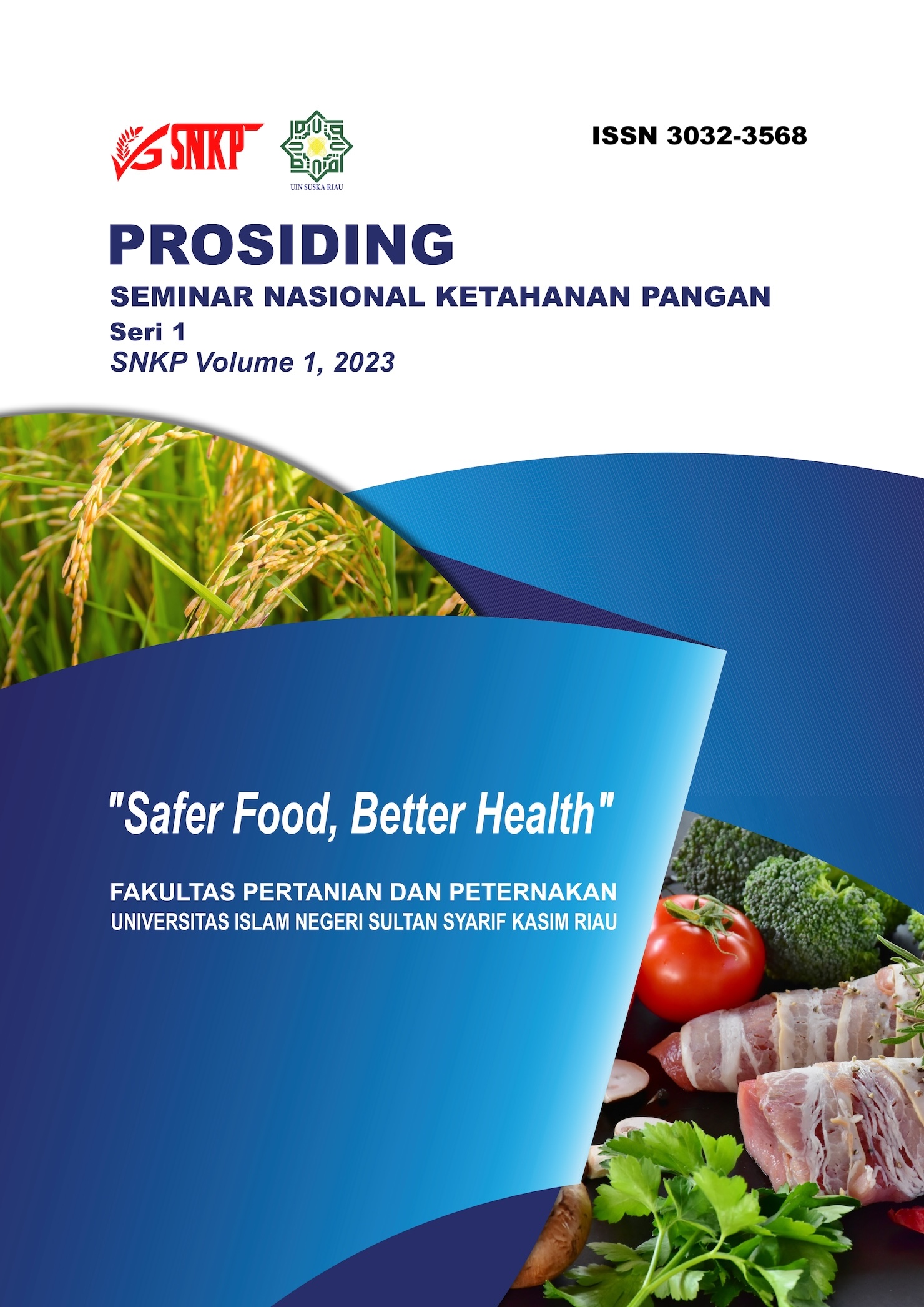ANALISIS POLA KONSUMSI PROTEIN HEWANI ASAL TERNAK DAN KARAKTERISTIK SOSIAL EKONOMI KELUARGA TERHADAP KEJADIAN STUNTING DI DESA KAREKA NDUKU SELATAN KABUPATEN SUMBA BARAT
Kata Kunci:
anggota keluarga, pola konsumsi protein hewani, pekerjaan, pendidikan, pendapatan, jenis ternakAbstrak
Background: The pattern of food consumption, including food sources of animal protein, is largely determined by household socio-economic factors such as income levels, food prices, tastes and eating habits. Objective: to analyze consumption patterns of animal protein from livestock and family socio-economic characteristics of stunting in Kareka Nduku Selatan Village, West Sumba Regency. Methods: This type of research is an analytic survey with a cross-sectional study design. The population in this study is 170 families. The sampling technique used is simple random sampling technique. The sample in this study were 120 toddler respondents. Results: The results of the educational statistical test on the incidence of stunting showed p=0.036 where education in the non-school category Protein Consumption Patterns And Family Economic Characteristics On Stunting had a total of 68 (56.7%) stunting events, the SD/SMP/SMA category had 49 (40.8%) stunting events and the tertiary category had 3 ( 2.5%) indicates a significant effect. Statistical test results for the number of family members in category 2-5. Family members had a total stunting incidence of 90 (75.0%), in category 6-9 family members had a total stunting incidence of 29 (24.2%) and in the category >12 family members had a total stunting incidence 1 (0.8%) while p = 0.649 which means there is no significant effect between the number of family members on the incidence of stunting. The results of the statistical test of family income on the incidence of stunting showed p = 0.044 where family income in the category < 1,950,000 had a total of 91 stunting events (75.8%) while the category > 1,950,000 had a total of 29 stunting events (24.2%) obtained p = 0.044 which means that there is a significant influence between family income on the incidence of stunting. The results of the statistical test for the type of livestock on the incidence of stunting showed p = 0.646 where the type of livestock in the category of not having a total stunting event of 18 (15.0%) and the category of having a total of 102 stunting events (85.0%) showed no significant effect. Statistical test results Consumption of animal protein in the category never consumed had a total of 76 stunting events (63.3%), in the occasional consumption category had a total of 25 stunting events (20.8%) and in the frequent consumption category had a total of 19 stunting events (15.8%) obernaktained a value of p = 0.003 indicating a significant effect on the incidence of stunting. Conclusion: There is a significant influence between work, education, family income, and consumption of animal protein. While the number of family members and types of livestock have no effect.Unduhan
Data unduhan tidak tersedia.
Unduhan
Diterbitkan
20-12-2023
Terbitan
Bagian
Articles
Cara Mengutip
ANALISIS POLA KONSUMSI PROTEIN HEWANI ASAL TERNAK DAN KARAKTERISTIK SOSIAL EKONOMI KELUARGA TERHADAP KEJADIAN STUNTING DI DESA KAREKA NDUKU SELATAN KABUPATEN SUMBA BARAT. (2023). Prosiding Seminar Nasional Ketahanan Pangan, 1(1), 119-127. https://ketahanan-pangan.uin-suska.ac.id/index.php/home/article/view/14


